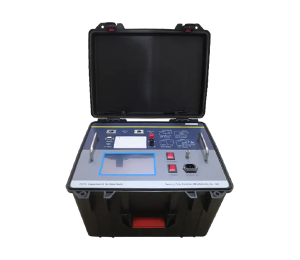 English
English



-
 Afrikaans
Afrikaans -
 Albanian
Albanian -
 Amharic
Amharic -
 Arabic
Arabic -
 Armenian
Armenian -
 Azerbaijani
Azerbaijani -
 Basque
Basque -
 Belarusian
Belarusian -
 Bengali
Bengali -
 Bosnian
Bosnian -
 Bulgarian
Bulgarian -
 Catalan
Catalan -
 Cebuano
Cebuano -
 China
China -
 China (Taiwan)
China (Taiwan) -
 Corsican
Corsican -
 Croatian
Croatian -
 Czech
Czech -
 Danish
Danish -
 Dutch
Dutch -
 English
English -
 Esperanto
Esperanto -
 Estonian
Estonian -
 Finnish
Finnish -
 French
French -
 Frisian
Frisian -
 Galician
Galician -
 Georgian
Georgian -
 German
German -
 Greek
Greek -
 Gujarati
Gujarati -
 Haitian Creole
Haitian Creole -
 hausa
hausa -
 hawaiian
hawaiian -
 Hebrew
Hebrew -
 Hindi
Hindi -
 Miao
Miao -
 Hungarian
Hungarian -
 Icelandic
Icelandic -
 igbo
igbo -
 Indonesian
Indonesian -
 irish
irish -
 Italian
Italian -
 Japanese
Japanese -
 Javanese
Javanese -
 Kannada
Kannada -
 kazakh
kazakh -
 Khmer
Khmer -
 Rwandese
Rwandese -
 Korean
Korean -
 Kurdish
Kurdish -
 Kyrgyz
Kyrgyz -
 Lao
Lao -
 Latin
Latin -
 Latvian
Latvian -
 Lithuanian
Lithuanian -
 Luxembourgish
Luxembourgish -
 Macedonian
Macedonian -
 Malgashi
Malgashi -
 Malay
Malay -
 Malayalam
Malayalam -
 Maltese
Maltese -
 Maori
Maori -
 Marathi
Marathi -
 Mongolian
Mongolian -
 Myanmar
Myanmar -
 Nepali
Nepali -
 Norwegian
Norwegian -
 Norwegian
Norwegian -
 Occitan
Occitan -
 Pashto
Pashto -
 Persian
Persian -
 Polish
Polish -
 Portuguese
Portuguese -
 Punjabi
Punjabi -
 Romanian
Romanian -
 Russian
Russian -
 Samoan
Samoan -
 Scottish Gaelic
Scottish Gaelic -
 Serbian
Serbian -
 Sesotho
Sesotho -
 Shona
Shona -
 Sindhi
Sindhi -
 Sinhala
Sinhala -
 Slovak
Slovak -
 Slovenian
Slovenian -
 Somali
Somali -
 Spanish
Spanish -
 Sundanese
Sundanese -
 Swahili
Swahili -
 Swedish
Swedish -
 Tagalog
Tagalog -
 Tajik
Tajik -
 Tamil
Tamil -
 Tatar
Tatar -
 Telugu
Telugu -
 Thai
Thai -
 Turkish
Turkish -
 Turkmen
Turkmen -
 Ukrainian
Ukrainian -
 Urdu
Urdu -
 Uighur
Uighur -
 Uzbek
Uzbek -
 Vietnamese
Vietnamese -
 Welsh
Welsh -
 Bantu
Bantu -
 Yiddish
Yiddish -
 Yoruba
Yoruba -
 Zulu
Zulu
Understanding the Tan Delta Test in Transformer Diagnostics and Performance Evaluation
Understanding the Tan Delta Test for Transformers
The tan delta test, also known as the power factor test, is an essential diagnostic tool employed in the maintenance and evaluation of transformer insulation systems. Its primary objective is to assess the insulation's condition and to detect any potential degradation that may lead to transformer failure. This non-destructive testing method provides vital information regarding the health of transformers, ensuring their reliability and efficiency in electrical networks.
What is Tan Delta?
The term tan delta refers to the tangent of the angle (delta) between the voltage and current waveforms in an inductive circuit. In the context of transformers, it represents the relationship between the resistive (loss) and reactive (storage) components of the current flowing through the insulation. A lower tan delta value indicates good insulation quality, while a higher value signifies potential defects such as moisture ingress, contamination, or material aging.
Importance of the Tan Delta Test
1. Condition Monitoring The tan delta test serves as an effective tool for monitoring the condition of transformer insulation over time. By conducting periodic tests, operators can identify changes in insulation performance and take corrective measures before significant failures occur.
2. Predictive Maintenance By analyzing tan delta data, maintenance personnel can better predict when a transformer may require repairs or replacement, thus minimizing downtime and reducing maintenance costs.
3. Detection of Defects The test helps in identifying various insulation faults, such as partial discharge, moisture presence, or the breakdown of insulation materials. This early detection can prevent catastrophic failures that may lead to costly outages or accidents.
Conducting the Tan Delta Test
Performing a tan delta test involves several steps
tan delta test of transformer pdf

1. Test Setup The transformer must be disconnected from the electrical grid, and appropriate safety precautions must be observed. The test equipment, typically a test set capable of applying a high voltage to the transformer, is connected to the insulation system.
2. Application of Voltage A high-frequency voltage is applied to the insulation system to induce a current. The test equipment measures the resulting current and voltage.
3. Calculation of Tan Delta The test equipment calculates the tan delta value by assessing the ratio of the resistive current (loss current) to the capacitive current (charging current) in the insulation system.
4. Analysis and Reporting The measured value is compared to baseline values from previous tests or to established industry standards. If the tan delta value is above the acceptable threshold, further analysis and remedial action may be necessary.
Interpreting Tan Delta Results
Interpreting the results of a tan delta test involves understanding the acceptable limits for the specific insulation materials used in the transformer. Generally, tan delta values below 0.5% are considered acceptable for most transformer insulations. Higher values indicate increasing insulation losses, and corrective measures should be taken.
It's crucial to consider environmental factors, such as temperature and humidity, as these can influence tan delta readings. Therefore, conducting tests under standardized conditions is essential for obtaining reliable results.
Conclusion
The tan delta test is an invaluable technique in the field of transformer maintenance and management. By providing insights into insulation quality and potential defects, this test helps utilities and organizations ensure the longevity and reliability of their transformer assets. Regular monitoring and analysis of tan delta values can proactively address issues, enhance operational efficiency, and consequently, safeguard the electrical infrastructure from unexpected failures. Through diligent application of this testing method, stakeholders in the energy sector can significantly contribute to the safety and performance of their systems.
-
Testing Equipment Industry Sees Major Advancements in 2025: Smart & Precision Technologies Lead the WayNewsJun.06,2025
-
Applications of Direct Current Generators in Renewable Energy SystemsNewsJun.05,2025
-
Hipot Tester Calibration and Accuracy GuidelinesNewsJun.05,2025
-
Digital Circuit Breaker Analyzer Features and BenefitsNewsJun.05,2025
-
Benefits of Real-Time Power Quality Monitoring Devices for Industrial EfficiencyNewsJun.05,2025
-
Earth Fault Loop Testing in High-Rise Building Electrical SystemsNewsJun.05,2025



